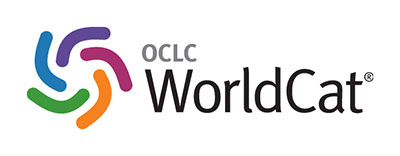Learning the differential and integral calculus with GeoGebra
DOI:
https://doi.org/10.26871/killkana_tecnica.v3i2.484Abstract
In this article, an explanation is presented in the improvement of the learning of derivatives and integrals making use of this computer program, GeoGebra, in university students, in order to be implemented in higher education in the area of mathematics in the school of systems engineer. Since one of the problems that we face in local and national situation is the insufficient benefit in higher mathematics in students. This problematic the probable causality is the restriction of the use of didactic resources, the exorbitant use of the blackboard, limited bibliographic resources to capacity, a traditional methodology where the students are a passive entity and receptive of the themes, the non insertion of the novelties Technological changes in the classroom are one of the possible reasons that would produce the diminutive performance of mathematics in students. That is why the GeoGebra program is important, which facilitates learning, thus solving more exercises and with great motivation they learn the differential and integral calculus. This work has application in derivative and integral subjects, the same ones that are improved year after year and evidence the transcendence of such application. The study was framed within the quantitative approach, deductive hypothetical method, applied type, experimental-quasi-experimental design, evaluation technique, and the sample selected to carry out this research was made up of 60 students in each group of the second cycle of the Systems engineer. The GeoGebra software improves the learning of differential and integral calculus.
Downloads
References
Aguilar, K., Silva, J. S.-M., & Zambrano, M.-A. M. (n.d.). Educación matemática y tecnologías empleadas para la enseñanza de las matemáticas. Core.Ac.Uk. Retrieved from https://core.ac.uk/download/pdf/85144055.pdf#page=57
Beatriz, J., & Durand, B. (2013). Mediación del software Geogebra en el aprendizaje de programación lineal en alumnos del quinto grado de educación secundaria. Retrieved from http://tesis.pucp.edu.pe/repositorio/handle/123456789/4737%5Ct
Coronado, C., Casadei, L., & Barrios, I. (n.d.). Geogebra para el Aprendizaje de la Matemática Inicial Universitaria. Academia.Edu. Retrieved from http://www.academia.edu/download/36364393/GeoGebra_para_el_Aprendiz aje_de_la_Matematica_Inicial_Universitaria_1.pdf
Gómez, E. H., … A. B. P.-A. de J., & 2016, U. (n.d.). Geogebra y TIC en matemáticas de enseñanza secundaria. Sapientia.Ualg.Pt. Retrieved from http://sapientia.ualg.pt/handle/10400.1/10255
Guzmán, V., Teresa, M., Mario, C. R., David, G. F., Beltrán, R., & Alfredo, J. (2012). GeoGebra en la enseñanza del Cálculo Diferencial, 1, 6. Retrieved from http://geogebra.itc.mx/docs/articulos/GeoGebra_ecd.pdf
Hohenwarter, M., & Fuchs, K. (2004). A combinación de geometría dinámica, álgebra e cálculo no sistema de software Geogebra. Computer Algebra Sistemas e DinâMicos ..., 2002(July). Retrieved from http://www.geogebra.org/publications/pecs_2004.pdf
Pumacallahui, E. (2015). El uso de los Softwares Educativos como estrategia de enseñanza y el aprendizaje de la geometría en los estudiantes del cuarto grado del nivel secundario en las Instituciones Educativas de la provincia de Tambo pata, región madre de Dios - 2012, 170.
Ruiz, N. (2013). Influencia del software de geometría dinámica Geogebra en la formación inicial del profesorado de primaria. Recuperado de: http://funes.uniandes.edu.co/4266/
Vargas, V., Clodomiro, G., & Huayllasco García, M. (2014). Geogebra en el aprendizaje de la geometría en los alumnos del cuarto grado de educación secundaria de la IEP fe y alegría n° 01 san Martin de Porres, 2013. Recuperado de: http://repositorio.ucv.edu.pe/handle/UCV/10653










